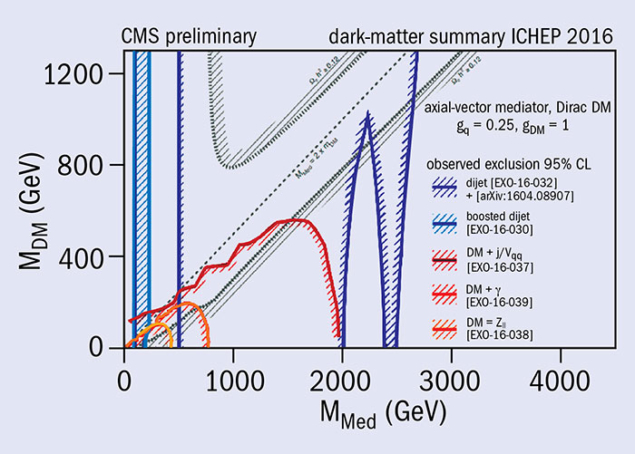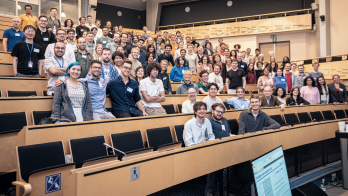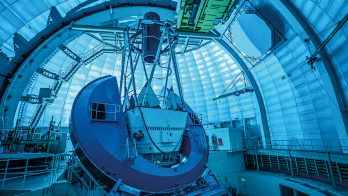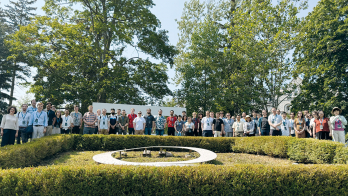
Understanding the nature of dark matter (DM) is the focus of extensive research at collider- and astrophysics-based experiments. The most well-known signature for DM production at the LHC is the so-called “mono-X” topology, for which events are characterised by the presence of a high-momentum object (e.g. a jet in the case of a mono-jet signature) from initial-state radiation in combination with significant missing transverse energy (ETmiss). The ETmiss signature may arise from DM particles that are stable yet electrically neutral and part of a colour-singlet, which means they will escape detection in the CMS experiment.

For a large class of DM models, however, the mediator cannot only be probed by conventional DM searches (such as the mono-X plus ETmiss analyses) but also by direct searches for the mediator. Such searches measure the mediator’s decay into Standard Model (SM) particles such as quarks, gluons and leptons. The most prominent example is the dijet-resonance search but also, depending on specific properties of the DM model considered, dilepton and diphoton searches may be relevant.
Using proton–proton collision data from the LHC collected at a centre-of-mass energy of 13 TeV, the CMS collaboration has recently updated several of its DM searches and placed stringent constraints on interesting DM parameter space (see figure 1). The limits shown in this plot are obtained by interpreting different collider searches from CMS in a simplified DM model. The model corresponds to an axial-vector mediator particle that is excited in proton–proton collisions and decays into two DM particles (figure 2, right) or SM particles (figure 2, left).

Although the absolute exclusions provided by these searches depend strongly on the chosen coupling and DM model scenario, the example of the axial-vector model illustrates that, in addition to the conventional mono-X plus ETmiss searches, dijet constraints can place significant bounds on relevant DM models and thus are an important ingredient in our quest of searching for DM at colliders.








